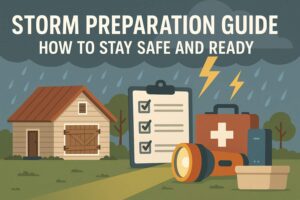Moving to a new home is both exciting and overwhelming. The thrill of a fresh start comes with the challenge of planning, packing, and adjusting to a new environment. Whether you’re moving across town or across the country, taking the time to consider key factors before your move can make the entire process smoother and less stressful. Here’s a guide to help you navigate the essentials so your big move goes off without a hitch.
1. Assess Your Needs and Priorities
Before you start packing boxes, it’s important to evaluate why you’re moving and what you need from your new home. Are you looking for more space, a better school district, or a shorter commute? Maybe you’re moving closer to family or exploring a completely new city. Identifying your priorities will help guide your decisions, from choosing the right neighborhood to selecting the ideal home layout.
For families, proximity to schools is often a top consideration. If you have children, researching local schools is crucial. For instance, if you’re relocating to Salt Lake City, finding a middle school that fits your child’s needs can influence your choice of neighborhood. Beyond schools, think about access to grocery stores, healthcare, parks, and public transportation.

2. Set a Realistic Budget
Moving can be costly, so setting a budget early on will prevent financial stress. Consider all expenses, including moving services, packing supplies, utility deposits, and temporary accommodation if needed. Don’t forget incidental costs, such as changing your driver’s license, updating your address, or purchasing new furniture for your new space. Planning ahead ensures you won’t be caught off guard by hidden expenses.
Additionally, budgeting can help you decide whether to hire professional movers or tackle the move yourself. Professional movers can save time and reduce physical strain, but they come at a higher cost. On the other hand, a DIY move may save money but requires more effort and careful planning.
3. Research Your New Neighborhood
A big part of moving successfully is understanding the community you’re about to join. Take time to explore neighborhoods in your target area. Check crime rates, local amenities, parks, and recreational options. Visit local coffee shops, libraries, and community centers to get a feel for the environment. Talking to future neighbors can provide valuable insight into daily life and community culture.
For families, it’s also important to think about long-term growth. Is the neighborhood likely to appreciate in value? Are there upcoming developments or infrastructure changes that could impact your living experience? These factors can influence both your quality of life and your property investment.
4. Plan Your Move Strategically
Timing can make a huge difference in the moving process. If possible, plan your move during a period that aligns with your schedule and the availability of moving services. Avoid peak moving times, such as weekends and the end of the month, when movers may be booked and traffic can be heavier.
Creating a detailed moving checklist is invaluable. Break down tasks week by week, from packing non-essential items early to organizing utilities and forwarding mail closer to moving day. Labeling boxes clearly and keeping an inventory will save time when unpacking.

5. Consider Your Emotional Transition
Moving isn’t just a logistical challenge—it’s also an emotional one. Saying goodbye to familiar places, neighbors, and routines can be tough, especially for children. Allow yourself and your family time to adjust. Discuss the move openly, involve everyone in the process, and highlight positive aspects of the new home and community.
Maintaining some familiar routines in your new space can help ease the transition. Whether it’s a family movie night, weekend walks, or visits to favorite local spots, small comforts can make a big difference in adapting to a new environment.
6. Prepare for the Unexpected
No matter how carefully you plan, unexpected situations can arise. Movers might be delayed, items could get lost, or utility setups might take longer than expected. Preparing for contingencies can reduce stress. Keep essential items like important documents, medications, and a change of clothes handy. Having a backup plan ensures you can handle surprises calmly and efficiently.
In Conclusion
Moving doesn’t have to be chaotic. By carefully considering your needs, budget, neighborhood, timing, emotional adjustment, and potential challenges, you can turn a potentially stressful experience into a smooth and manageable transition. Taking the time to plan ahead allows you to focus on the excitement of a fresh start and enjoy your new home from day one. Whether it’s finding the right middle school in Salt Lake City for your kids or making sure your utilities are ready, preparation is the key to a successful move.
With these factors in mind, your next move can be made simple—stress-free, well-organized, and even enjoyable.






